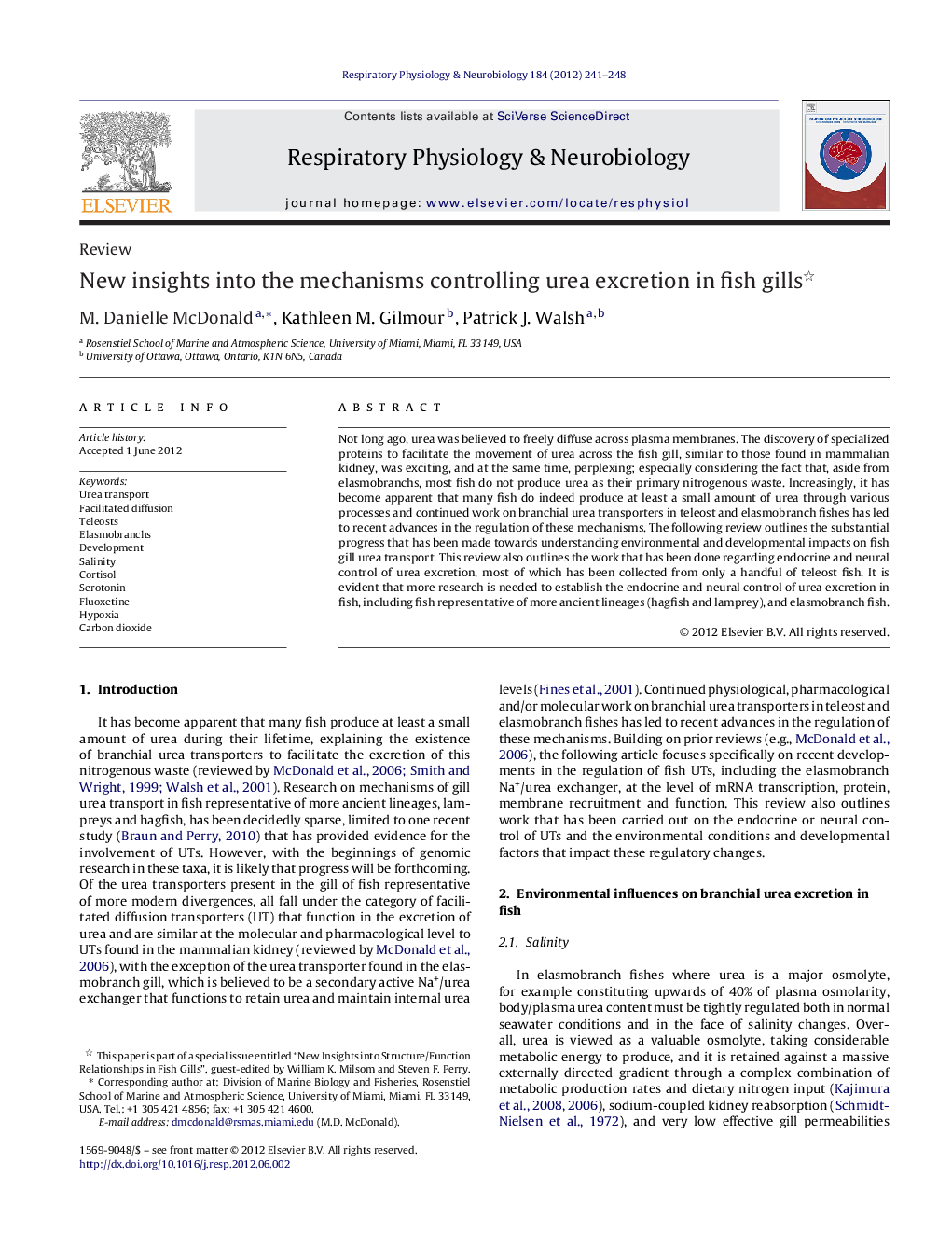| Article ID | Journal | Published Year | Pages | File Type |
|---|---|---|---|---|
| 2847358 | Respiratory Physiology & Neurobiology | 2012 | 8 Pages |
Not long ago, urea was believed to freely diffuse across plasma membranes. The discovery of specialized proteins to facilitate the movement of urea across the fish gill, similar to those found in mammalian kidney, was exciting, and at the same time, perplexing; especially considering the fact that, aside from elasmobranchs, most fish do not produce urea as their primary nitrogenous waste. Increasingly, it has become apparent that many fish do indeed produce at least a small amount of urea through various processes and continued work on branchial urea transporters in teleost and elasmobranch fishes has led to recent advances in the regulation of these mechanisms. The following review outlines the substantial progress that has been made towards understanding environmental and developmental impacts on fish gill urea transport. This review also outlines the work that has been done regarding endocrine and neural control of urea excretion, most of which has been collected from only a handful of teleost fish. It is evident that more research is needed to establish the endocrine and neural control of urea excretion in fish, including fish representative of more ancient lineages (hagfish and lamprey), and elasmobranch fish.
► We outline the progress that has been made towards understanding environmental and developmental impacts on fish gill urea transport. ► We describe the work that has been done regarding endocrine and neural control of urea excretion. ► We make several hypotheses based on existing evidence on the control of urea excretion in fish and suggestions for future research.
